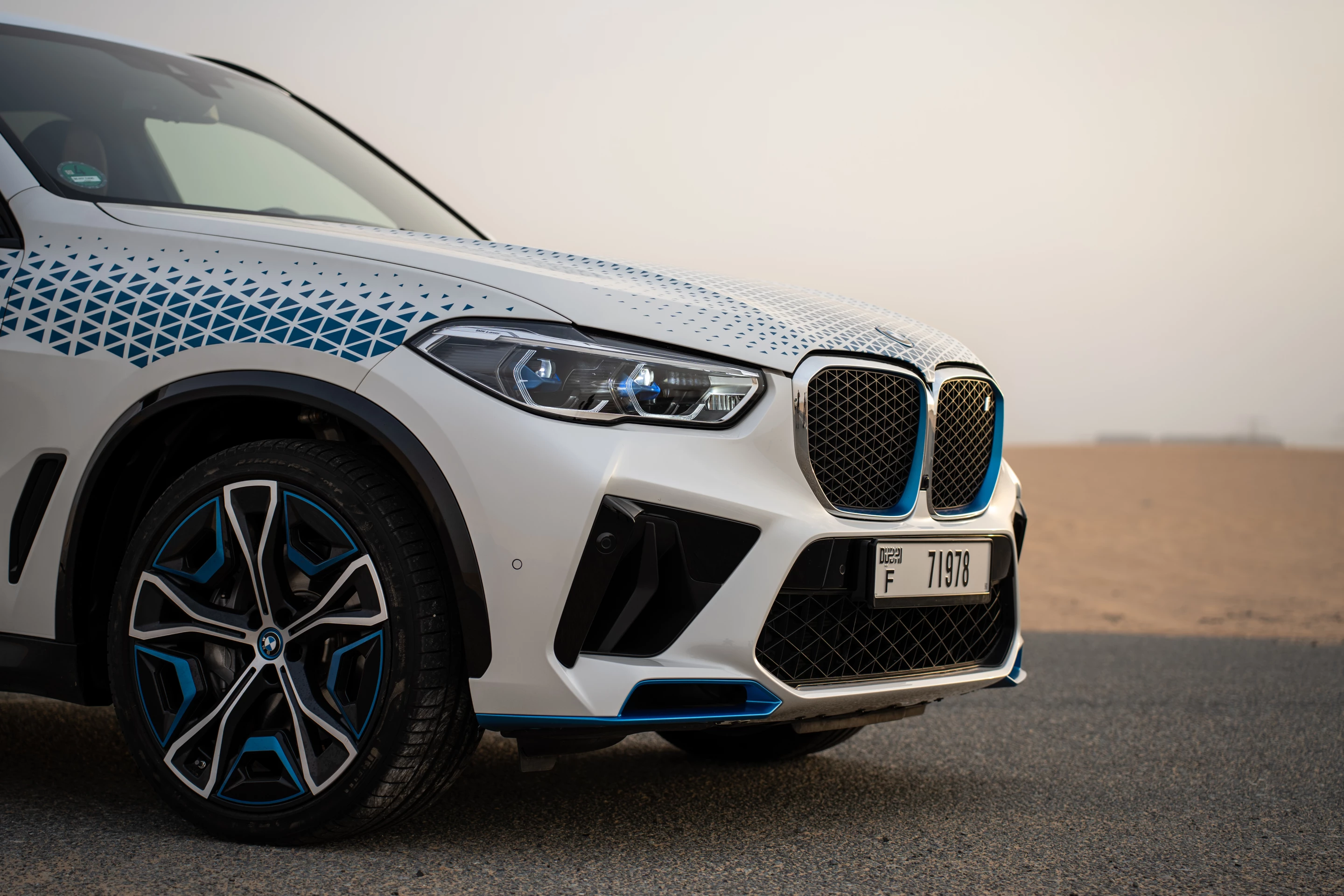Launched in February of this year, BMWs iX5 pilot fleet of hydrogen-powered cars has been getting field tested in countries around the world. Most recently, the passenger car got put through its paces in the punishing conditions of the UAE.
Even though it advised caution regarding the commercial availability of hydrogen-powered vehicles when it announced a partnership with Toyota in 2020 to develop a fuel-cell powertrain, just three years later, BMW has rolled out its hydrogen pilot fleet. That fleet is currently in operation in Korea, Japan, Europe, the US, China, and now, the Middle East. During its test run in the United Arab Emirates (UAE), for the first time the passenger car experienced temperatures that climbed to 113 °F (45 °C) and got a bit battered by sand and dust. The company says the car performed perfectly and came through the experience just fine.
The iX5 hydrogen fleet is powered by the same system announced in 2020.
That is to say, the cars contain dual 700-bar (10,150 psi) pressurized tanks made from carbon-fiber-reinforced plastic, each holding approximately 6 kg (13.2 lb) of hydrogen fuel. The fuel-cell system converts this to electric power with an output of 125 kW/170 HP, with BMW saying they can accelerate from 0-60 mph in under six seconds. That power is processed by BMW's integrated drive unit that sees the transmission, electric motor, and power electronics fit snuggly together in a compact housing. The cars have a range of about 313 miles (504 km) and BMW says they take about 3-4 minutes to refuel.

Part of the pilot fleet's rollout, says the company, is to overcome one of the technology's big hurdles: creating a big enough refueling infrastructure to support more widespread uptake of hydrogen-powered vehicles.
"The BMW Group is using the pilot fleet to provide support on a regional level for the development of a refueling infrastructure which can be used with 700-bar refueling technology across all categories of vehicle – from passenger cars and small vans to buses and heavy-duty commercial vehicles," said the company. "Synergies between different areas of application also offer important scope for developing a strong network of suppliers in hydrogen technology and reducing costs."
While it remains to be seen if hydrogen-powered cars will actually become commercially viable, we have seen several automakers aside from Toyota and BMW begin to explore the tech. Last year, new automaker NamX announced a 300 hp car that would be powered by swappable hydrogen cartridges. These cartridges would be delivered to your home as needed, allowing the company to get over the refueling-infrastructure issue.
2022 also saw UK startup Viritech announce a 1,000 kg (2,205 lb) hydrogen-powered hypercar that could make 1,000 hp, at least for about a half a minute. That car also used 700-bar tanks.
And in May of this year, in a demonstration of hydrogen's potential, a student team from TU Delft set a Guinness distance record with a pretty odd-looking hydrogen-powered city car concept that traveled 1,546.18 miles (2,488.45 km) on 950 g (about 2 lb) of the fuel.
You can see the BMW iX5 in action in the video below.
Source: BMW






